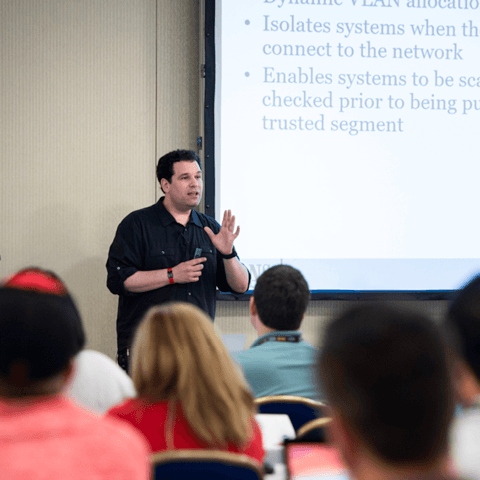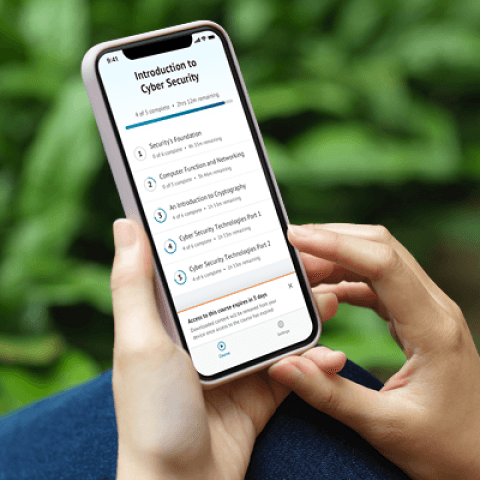SEC595: Applied Data Science and AI/Machine Learning for Cybersecurity Professionals


Experience SANS training through course previews.
Learn MoreLet us help.
Contact usBecome a member for instant access to our free resources.
Sign UpWe're here to help.
Contact Us
Apply your credits to renew your certifications
Attend a live, instructor-led class at a location near you or remotely, or train on your time over 4 months
Course material is geared for cyber security professionals with hands-on experience
Apply what you learn with hands-on exercises and labs
Lead AI and cloud security transformation with clarity. Master strategic frameworks to drive business innovation and build defenses against tomorrow's threats.
This type of training, i.e., cloud security from a management perspective, is rare and the quality of this one is definitely amazing.
LDR520: Emerging Trends for Cyber Leaders: AI and Cloud empowers leaders to navigate the complex, interconnected risks of AI and cloud transformation. You will master AI security by establishing robust governance frameworks and building practical implementation roadmaps to defend against modern threats. The course then establishes a critical foundation in cloud security, covering everything from identity and infrastructure protection to advanced data operations and multicloud governance. Finally, you will look ahead to post-quantum cryptography and apply all learned concepts in a comprehensive, executive-level capstone exercise.


Jason is a leading consultant sought after by Global 500 companies across finance, healthcare, and technology sectors worldwide. Over the years, he has led intrusion detection, penetration testing, defense improvement programs, and incident response.
Read more about Jason LamExplore the course syllabus below to view the full range of topics covered in LDR520: Emerging Trends for Cyber Leaders: AI and Cloud.
This section establishes the critical business case for AI leadership, anchoring on the 'Govern AI' pillar with deep dives into essential compliance frameworks. This section then transitions to the 'Protect AI' pillar, defining the modern threat landscape and the specific vulnerabilities leaders must mitigate.
This section delivers practical defensive strategies against AI-enabled threats and adversarial attacks while leveraging AI to transform security operations. Participants build comprehensive implementation roadmaps including vendor selection, resource planning, and measurable ROI targets for organizational deployment.
This section establishes the critical foundation for cloud security, covering fundamental adoption models, identity management, and core infrastructure protection. It provides the essential building blocks for creating a secure and resilient cloud environment from the ground up.
This section focuses on protecting your most critical assets and managing ongoing security operations, from data encryption and incident response to securing workloads. It also covers the strategic aspects of multicloud governance, compliance, and organizational alignment for a mature security posture.
This section addresses the modern crypto transition to post-quantum security management, a critical future-proofing strategy. It culminates in a capstone exercise where students apply all concepts and skills learned throughout the course in a practical, executive-level scenario.
Developing cloud security roadmaps, plans and procurement models to mature cloud security.
Explore learning pathResponsible for overseeing and directly managing technology projects. Ensures cybersecurity is built into projects to protect the organization’s critical infrastructure and assets, reduce risk, and meet organizational goals. Tracks and communicates project status and demonstrates project value to the organization.
Explore learning pathResponsible for managing the cybersecurity of a program, organization, system, or enclave.
Explore learning pathDaily focus is on the oversight of technical teams while aligning them to overall business strategies. Includes titles such as Technical Director, Information Security Officer, and CISO.
Explore learning pathDesigns and secures the defensive architecture of secure cloud environments.
Explore learning pathThis role conducts supervises, manages and leads cybersecurity teams and work. Find the SANS courses that map to the Leadership SCyWF Work Role.
Explore learning pathResponsible for leading, coordinating, and the overall success of a defined program. Includes communicating about the program and ensuring alignment with agency or organizational priorities.
Explore learning pathManages an organisation’s cybersecurity strategy and its implementation to ensure that digital systems, services and assets are adequately secure and protected.
Explore learning pathWhen purchasing a live, instructor-led course, add 4 months of online access. View price in the info icons below.
Add 6 months of hands-on skills practice. Add to your cart when purchasing your course.
Great course, a lot of material to go through but it really shows the model an organization should follow to increase the security on cloud environments.
The game platform [Cyber42] and challenges are really interesting and add a nice dimension to the class.
Perfect for understanding the inner workings without getting too in the weeds.
Great way to break out of just the technical aspects of cloud and a step towards management level learning.

Get feedback from the world’s best cybersecurity experts and instructors

Choose how you want to learn - online, on demand, or at our live in-person training events

Get access to our range of industry-leading courses and resources